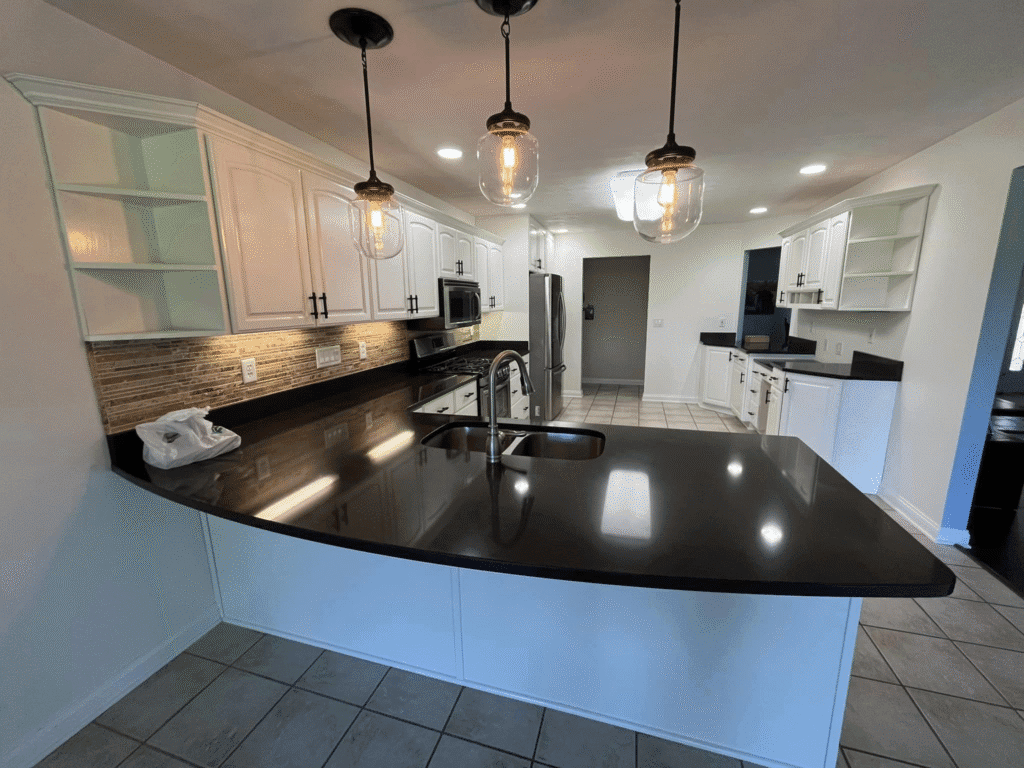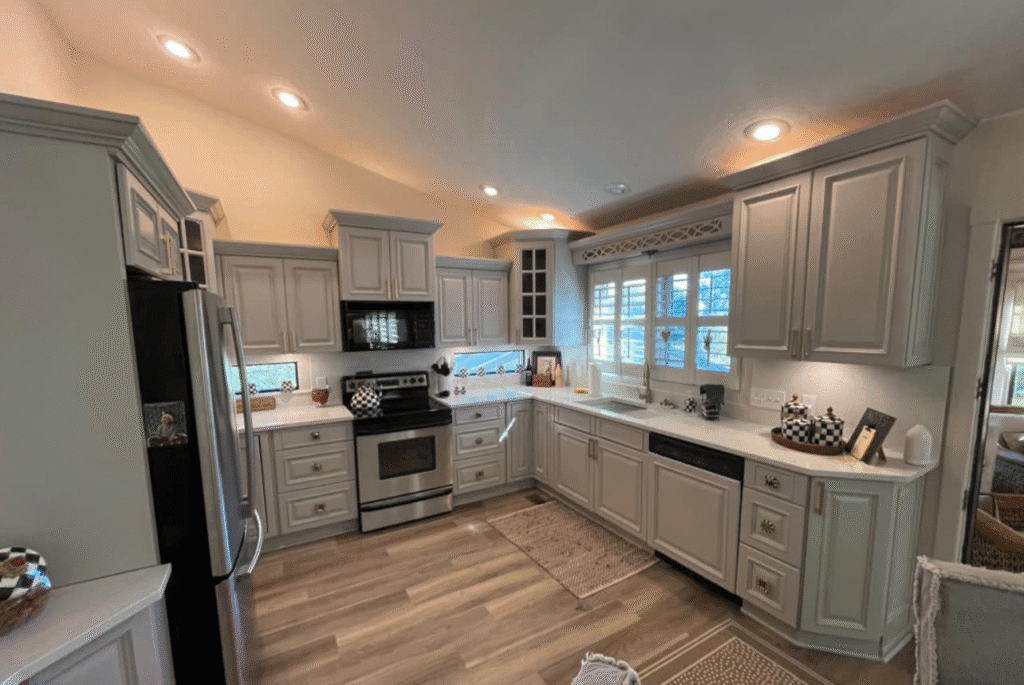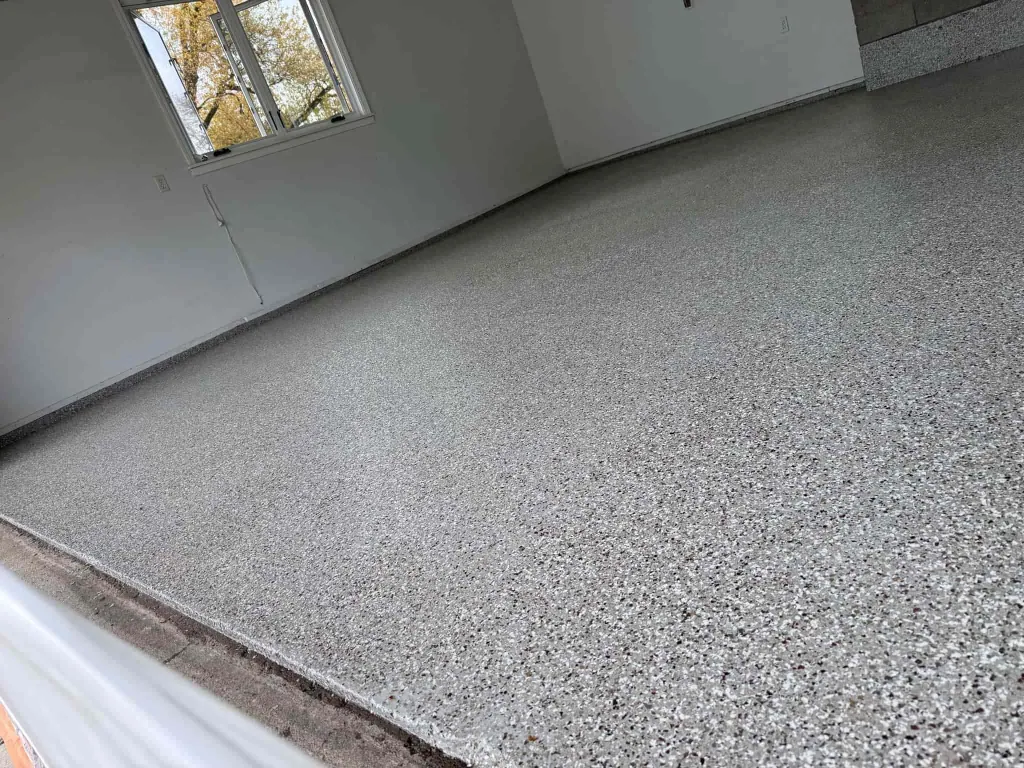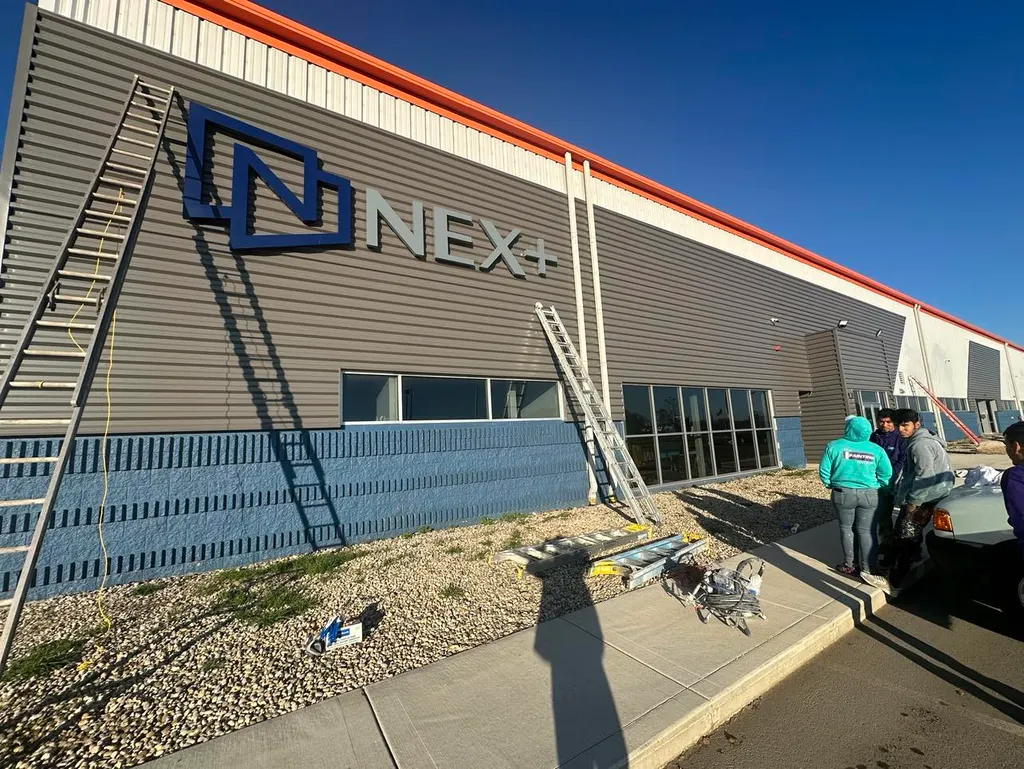You want the best paint for kitchen cabinets, yet the shelves of color cans feel endless. These choices can drive your whole list of kitchen remodel ideas, and the wrong pick may haunt your entire kitchen. A single fresh coat should stretch every dollar when you juggle a tight budget.
Good news: smart choices protect your kitchen cabinets and keep the project fun, not frantic. Ready to learn what separates winners from “why-did-I-buy-that” losers? Let’s dive in.
1. Evaluate Your Existing Kitchen Cabinets Before Selecting Cabinet Paint
Choosing color without studying your space is like blindfolded darts. First, notice door styles, hinge lines, and how your run of cabinets meets the dining room trim. Those details guide sheen, tone, and coverage.
Grain matters, too. Open-pore wood cabinets drink liquid faster than tight maple. Pair grain with planned paint color so lines complement and don’t fight. If wide wood grain shows, the painting crew may seal raw wood before coating.
Paint brands vary in pigment load, so matching brand to door species grants the right paint feel. That single step makes all the difference in washability and touch-up ease. Popular neutrals and the latest ideal paint hues for white cabinets change yearly, yet classic white paint always wins fans.
A quick checklist can help you visualize:
- Check door overlay to avoid shadow lines
- Inspect corner seams for previous filler failures
- Note light direction to judge reflection, not just shade
- Compare knob metals against sample boards
- Think about future backsplash updates before locking color
You now know how visual cues drive smart painting cabinets decisions and how cabinet paint should match the structure beneath.
2. Surface Readiness Matters: How Prep (Clean, Lightly Sand, or Skip Sanding) Guides Your Pick of the Best Paint
Before color dreams start, surface truth hits hard. The best kitchen cabinet paint will still fail on greasy boxes. **Cabinet painting contractors** inspect edges, spatter marks, and joint gaps to see what bonding hurdles lurk.
Hinges come off, revealing hidden grime around cabinet doors. Crews may lightly sand high spots, or, in rare cases, skip sanding when laminate skins already accept finish. What’s next? They’ll prep properly with a good bonding primer that blocks stains and seals tannins. Many primers now cut volatile organic compounds, so strong smells fade fast while painters suit up in full protective gear.
Under that sealer, porous wood surfaces relax, and sharp lines appear once trim paint frames openings. The final decision—gloss, satin, or bold color—then rests on how the day’s prep guided adhesion and set the stage for flawless kitchen cabinet paint.
3. Understand Paint Chemistry: Comparing Sherwin Williams Cabinet Paint, Latex Paint, and Other Formulas to Find the Best Cabinet Paint for Kitchen Projects
“Choices overwhelm me.” You’ve likely whispered that. Finding the best cabinet paint for kitchen traffic means decoding resins, solvents, and cure times. The notes below will clarify, not confuse.
Latex & Water Based Paints
Latex offers easy clean-up and low fumes. These blends remain flexible, so doors resist chips. Many add conditioners for a slick smooth surface without sag.
Hybrid Paints & Alkyd Paint
New “cross-linking” resins bridge oil and acrylic. One standout is emerald urethane. It self-levels and bonds like enamel but cleans with water, perfect for families who cook nightly.
Advance Paint
These lines mimic oil based paint yet sidestep strong odors. Users rave about slow dry times that allow brush marks to melt away, making them stellar paint for kitchen cabinets.
Traditional Oils & Traditional Oil Paint
Yes, old school survives. High-solid oil paints soak into timber and deliver rock-hard shells. When heritage looks matter, pros still reach for this time-tested option.

Specialty Finishes: Annie Sloan Chalk Paint, Milk Paint, and Other Comparable Paints
Charming cottages call for texture. Chalky layers distress well, while milk paint adds age in hours. Remember to compare these lines to comparable paints before deciding—they differ in adhesion tricks and top-coat needs.
Price also guides choices. Some fear expensive paint, but value often hides in performance. A high quality paint resists grease better than “bargain” gallons, so the best paint may pay for itself.
Yet color loyalty can steer you toward a beloved tint in paint for kitchen lines. Scan each paint product label, and note how Sherwin Williams shades shift in certain lights.
4. Factor in Application Method: Will a Paint Sprayer or Foam Roller Influence Which Paint You Choose?
Some finishes only sing with atomized mist. Others shine after a gentle roll. Keep these points in mind:
- A paint sprayer lays thin, even films, crucial for shaker edges and panels.
- Upgrading to a best paint sprayer model lets crews fine-tune fan width for zero sags.
- Tight spots? A low-nap foam roller glides where guns can’t reach.
- Controlled spray painting slashes brush marks and tames flash lines that turn into roller marks.
- Less contact equals fewer brush strokes, granting that showroom factory smooth finish many call factory smooth on their own cabinets. Seasoned professional painters then polish each layer into a glassy smooth finish, and if irregular ridges appear, they blame cheap gear—what careless paint makes.
5. Pick the Perfect Sheen: Semi Gloss vs. High Gloss Finish and Everything in Between
Sheen steers both style and scrub power. A mid-range semi gloss finish hides minor bumps yet wipes clean after spaghetti night. It balances shine and subtleness, thanks to resin ratios that control overall paint sheen.
Sometimes, you crave a softer vibe. A gentle satin finish pairs with beadboard or exposed beams. In pure color labs, a straight semi gloss lifts whites while muting glare. Want mirrors on doors? A daring high gloss finish reflects light like water, but it can reveal every tiny swirl.
Long life matters. Crews test every batch for a durable finish before spraying. A modern urethane trim enamel flexes, resists dents, and levels smooth. Once the final coat lands, craftsmen eyeball edges for holidays. Touch-ups between multiple coats ensure no ridges mar the paint finish—a huge difference visible in the finished product.
Even a dream paint job needs balance. Sometimes a subdued matte finish on side panels frames glossy doors. If color feels thin, a quick second coat seals pores and sets depth.
FAQs About Choosing the Best Cabinet Paint for Kitchen Makeovers
Q1. What makes a product the best cabinet paint?
Look for high solids, smooth leveling, and a warranty that proves faith in the formula.
Q2. Can any primer pair with new enamel lines?
Most top brands recommend their own basecoat for long bonding life.
Q3. Do darker shades wear out faster?
Quality pigments stay vibrant; fading often comes from cleaners, not hue.
Q4. How soon can hardware return after spraying?
Pros allow full cure time, so doors close without sticking.
Q5. Is pro spraying worth the cost?
Yes, flawless film and zero touch-ups save stress over years of daily cooking.
Bring That Color Home
Ready to watch dull doors turn stunning? Call The Painting Group at (765) 553-4203 or visit 17 S. 6th St., Lafayette, IN 47901. The family crew will match paint, prep surfaces, and leave a factory-level finish you’ll admire for years.




